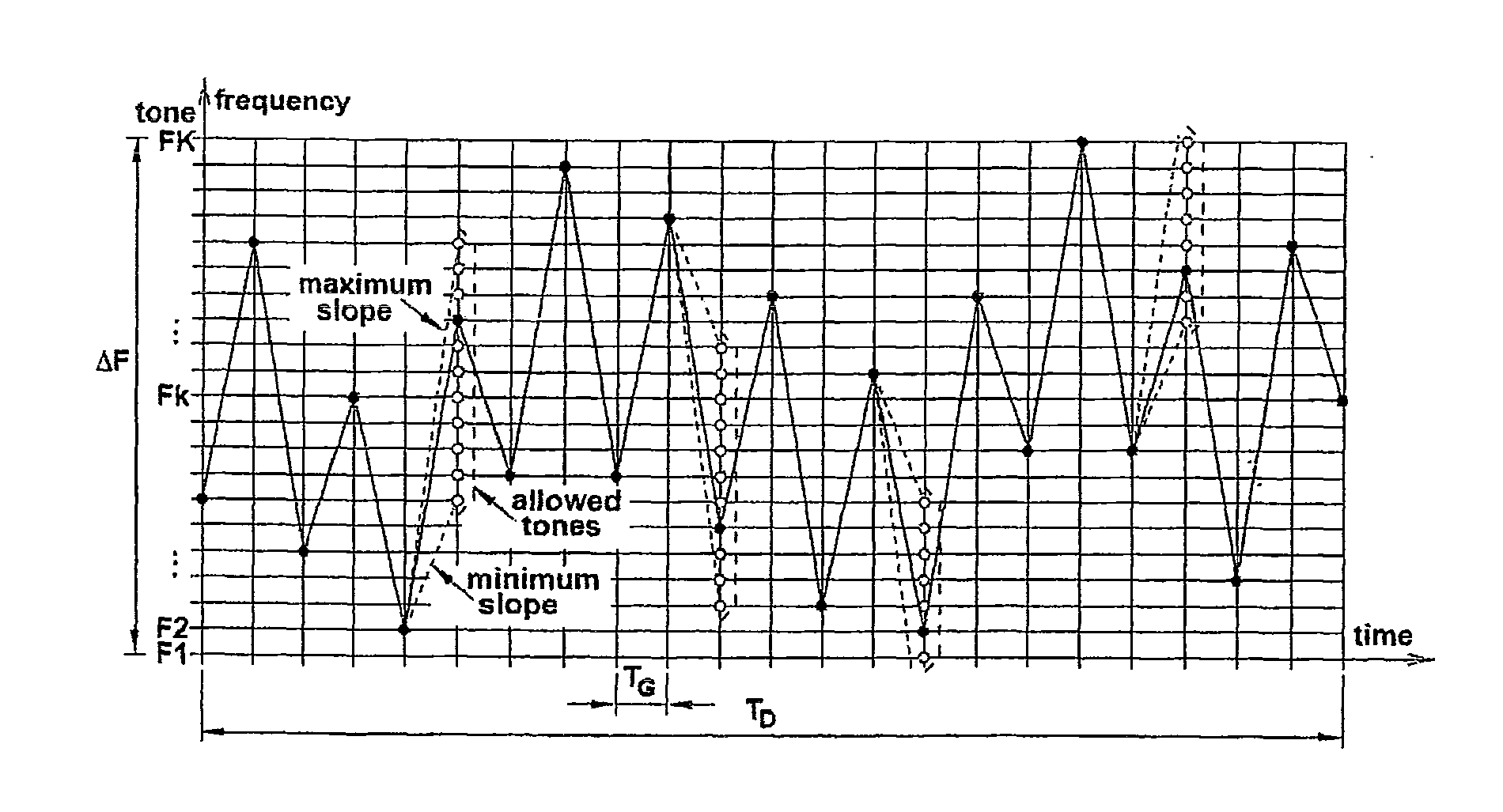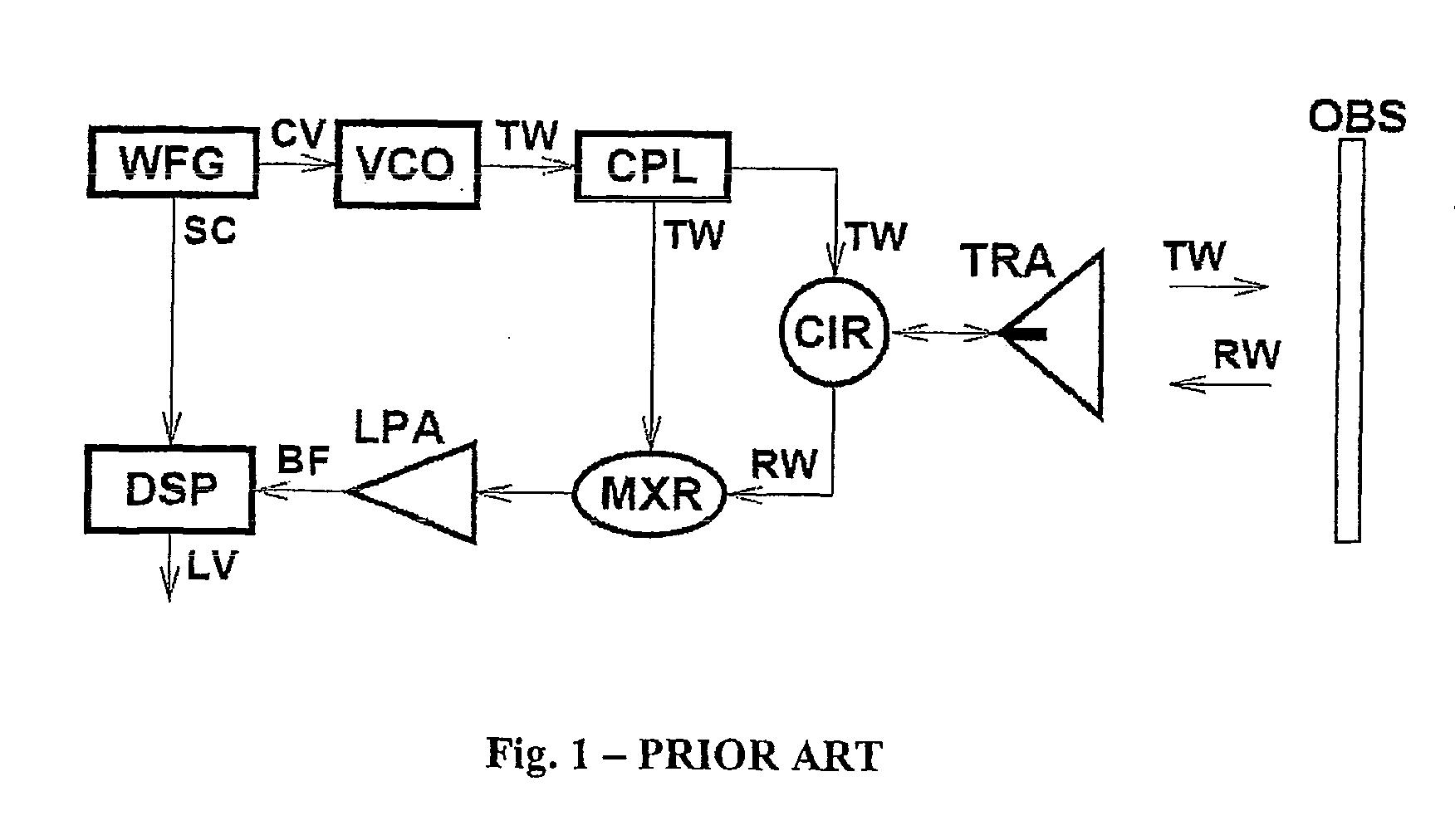Object detection
a waveform and object technology, applied in the field of waveform generation, can solve the problems of non-repetitive interference, achieve the effects of reducing the frequency of the interference, reducing the interference, and reducing the interference ra
- Summary
- Abstract
- Description
- Claims
- Application Information
AI Technical Summary
Benefits of technology
Problems solved by technology
Method used
Image
Examples
case b suppose
[0110 now that equal probability, 1 / 5, of each of the five tones is required. In this case, the threshold values should be chosen as: T21=12, T31=22 and T32=39. Although the tone probabilities are equal, the slope probabilities are now all different: P(SL=1)=0.42, P(SL=2)=0.33 and P(SL=3)=0.25.
case c
[0111 In some applications, it may be required to reduce the probability of occurrence of one of the slopes. For example, selecting the thresholds as: T21=59, T31=20 and T32=21, will result in the following slope probabilities: P(SL=1)=P(SL=3)=0.49, and P(SL=2)=0.02. In this case, the tone probabilities will be as follows: P(F1)=P(F5)=0.19, P(F2)=P(F4)=0.25 and P(F3)=0.12.
[0112]FIG. 10 shows schematically the empirical histograms of tones and slopes obtained for each of the above cases, and FIG. 11 depicts examples of trajectories of corresponding frequency walks. For illustrative purposes, the frequency of the tones and time intervals are expressed in practically useful units. As seen, different values of tone and slope probabilities result in different appearance of the trajectories.
[0113]FIG. 12 is an example of the application of a digital glissando controller GTR constructed in accordance with the invention to automotive FMCW radar. In the example shown, the waveform generator ...
PUM
 Login to View More
Login to View More Abstract
Description
Claims
Application Information
 Login to View More
Login to View More - R&D
- Intellectual Property
- Life Sciences
- Materials
- Tech Scout
- Unparalleled Data Quality
- Higher Quality Content
- 60% Fewer Hallucinations
Browse by: Latest US Patents, China's latest patents, Technical Efficacy Thesaurus, Application Domain, Technology Topic, Popular Technical Reports.
© 2025 PatSnap. All rights reserved.Legal|Privacy policy|Modern Slavery Act Transparency Statement|Sitemap|About US| Contact US: help@patsnap.com



